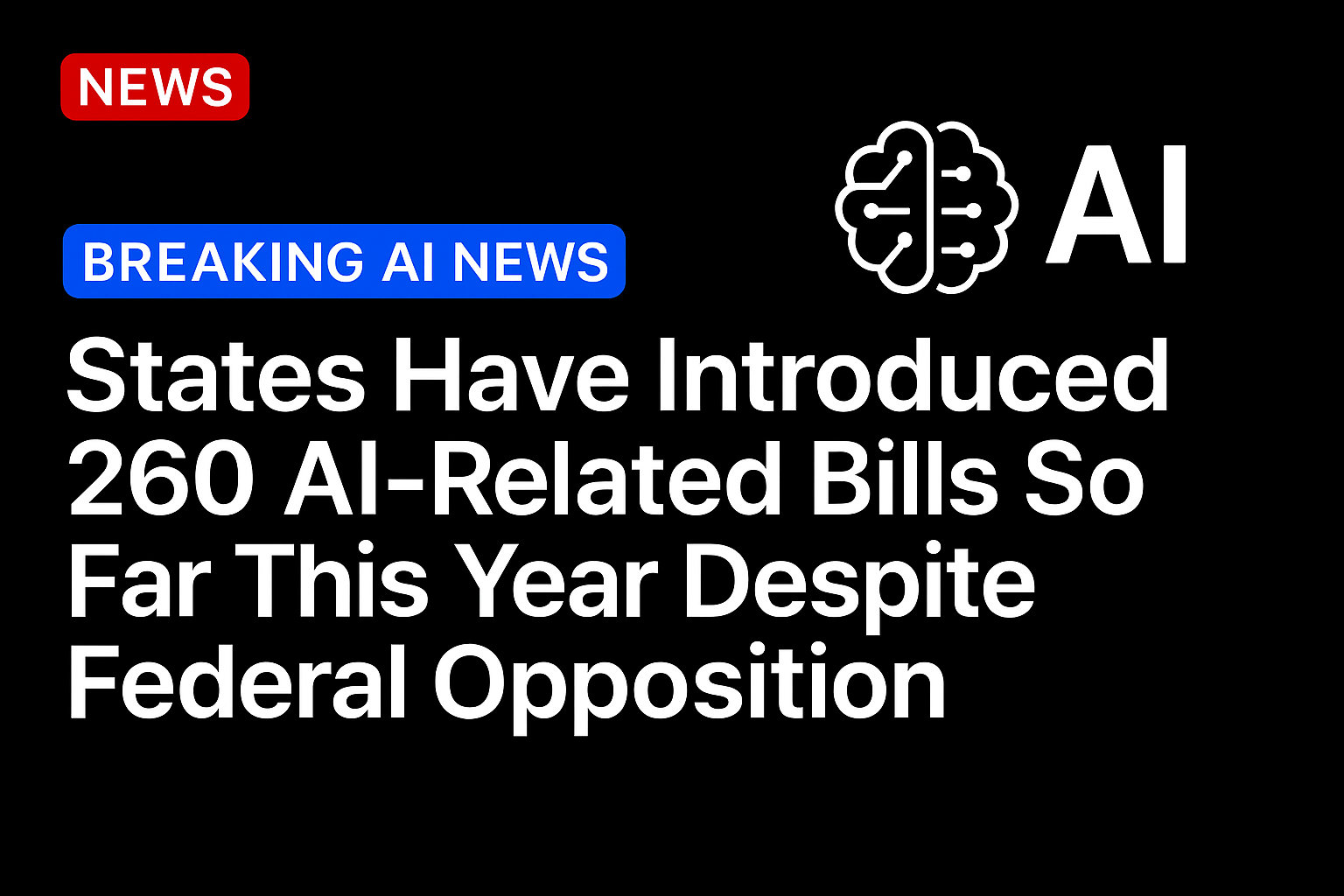
While the Trump administration and Republicans in Congress have lately cast a gimlet eye on state-level AI regulations, a comprehensive review of state legislation by the Brookings Institution found 260 AI-related measures that had been introduced in state houses through just the first six months of 2025. Of those, 22 have passed into law, while the rest remain pending or were rejected.
New York led the pack with 36 bills introduced, of which 2 have passed thus far, while Texas passed the most AI measures, enacting four of 15 introduced. Illinois, California, and Maryland were also AI hothouses, with 21, 19, and 18 bills, respectively, but only Maryland passed an AI this year.
The action in state houses runs counter to federal efforts to tamp down AI regulations, particularly at the state level. The administration’s AI Action Plan released last month orders federal agencies to “identify, revise, or repeal regulations, rules, memoranda, administrative orders, guidance documents, policy statements, and interagency agreements,” deemed to impede AI development and deployment. It also proposes withholding federal AI funds from states that enact “burdensome AI regulations.”
Republicans in the House and Senate sought to impose a 10-year moratorium on enforcement of AI regulations by states as part of the budget reconciliation bill passed in June, although the provision was ultimately dropped from the final version.
Not all proposed state AI measures run counter to federal priorities, however. The two biggest targets of 2025 bills were non-consensual intimate imagery (NCII, i.e. deepfake porn) and child sexual abuse material (CSAM), with a combined 53 bills introduced. Many of the anti NCII provisions in the state bills parallel the federal Take It Down Act passed earlier this year. Although federal CSAM laws apply only to material involving actual identifiable minors not to AI-generated images, federal prosecutors have sought, with mixed success, to invoke the more general child obscenity law to combat AI-generated CSAM. The state-level measures are aimed at plugging the AI gap in federal CSAM laws, although none have yet passed.
The next biggest target of the state bills is election-related AI fraud, with 33 measures introduced. Many, such as New York’s “political artificial intelligence disclaimer (PAID) act” would require campaigns to disclose any use of “synthetic” content in political communications, although some, as in Massachusetts, would also bar in use in communications meant to damage an opponent. None have yet been passed.
Election-related measures were followed by AI transparency bills, with 31 introduced. The most common concern they addressed is that a person may not be aware they are communicating with a chatbot. Two such laws were passed by states in 2025.
While the NCII and CSAM bills attracted bipartisan support in many cases, there was a clear partisan divide on bills aimed at other targets, according to the Brookings analysts. Democrats introduced the most AI bills at 173, compared to Republicans with 84. Democratic bills tended to focus more broadly, on issues such as AI governance and regulation, while Republican bills typically targeted specific uses of the technology, such as CSAM and election fraud.
Source: https://www.pymnts.com/




